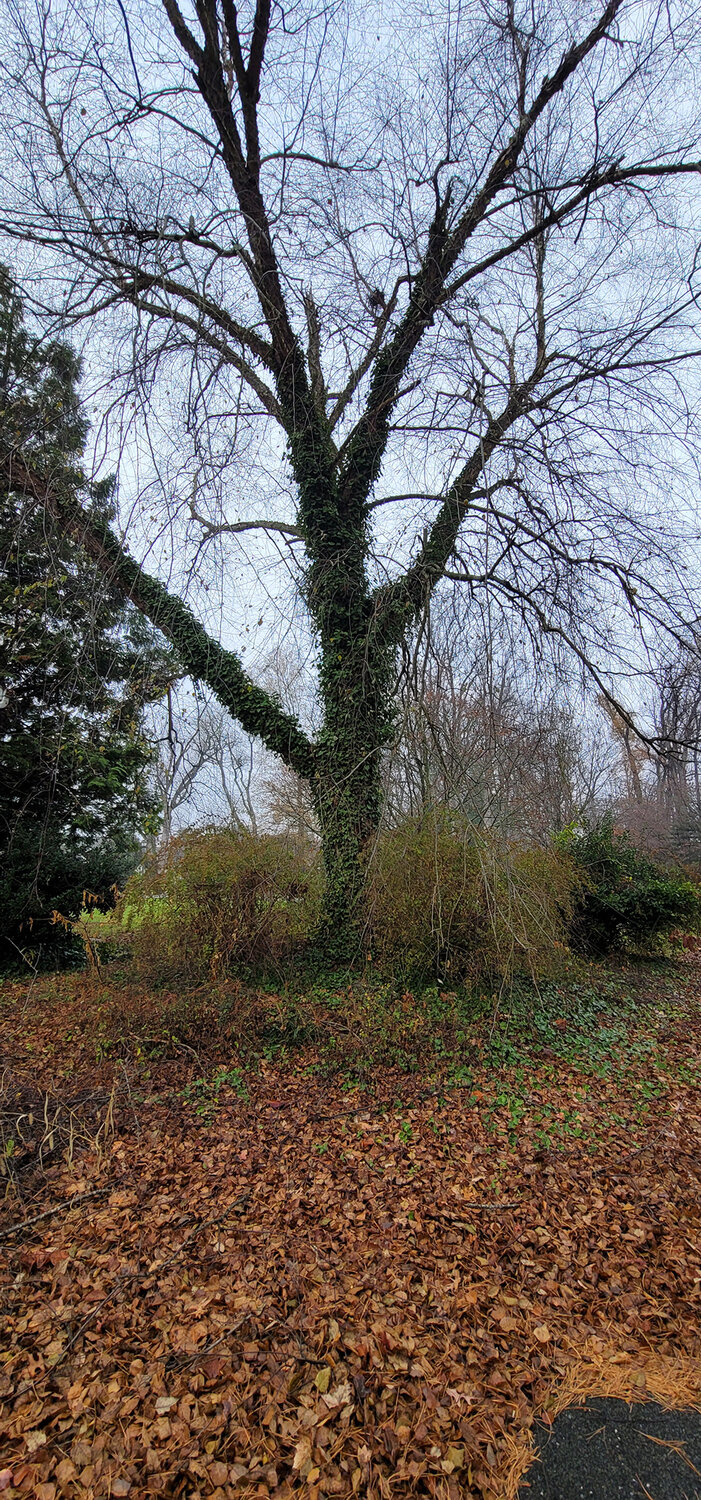English ivy not welcome in neighborhood gardens
English ivy might make a nice holiday wreath, but it does not make a nice garden plant. In fact, it is so harmful to the ecosystem, it has been banned from sale in many states, including Delaware. Although its presence is pervasive, it can (and should) be removed and replaced with a beneficial native ground cover.
English ivy was originally brought here from Europe in the 1700s as an ornamental, evergreen plant. It is native to many places in the world, from Europe to Western Asia, but not to the Americas. Not all nonnative plants are invasive, but those that are wreak havoc.
English ivy destroys habitats, trees, and even buildings. Its thick carpet harbors mosquitoes, rodents and ticks. It spreads invasively, thereby crowding out native plants which nurture native insects and birds.
English ivy that is allowed to climb a building can trap moisture and cause damage to the siding. When left unchecked, it will slowly strangle a tree, blocking sunlight from the leaves, and depriving the tree of nutrients and water. The vines loosen the bark, creating conditions for fungal disease, decay, and bacterial leaf scorch which is a disease that can spread to (and kill) many native trees including maples, oaks and elms.
Beginning in July, 2022, the sale of 37 invasive species (including English ivy) were banned in Delaware. (See the Delaware Invasive Species Council website for a complete list, https://delawareinvasives.net.) Private property owners are simply encouraged to remove and replace any invasive species they might have on their own land. (There are no “English ivy police” out to get you!)
December is the perfect time to identify and remove English ivy. It is easy to see, and the ground is usually moist enough to make pulling these plants out by hand — although labor-intensive — relatively easy (depending on how much of your property is covered). You can use a garden rake to comb through and pull some of the strands from the ground. What is left behind will need to be pulled out by hand.
Some people have success by mowing the ivy low to the ground, laying a thick (6 to 8 inches) layer of mulch, and then immediately applying a systemic herbicide such as glyphosate to any shoots as they appear. Any application of an herbicide must be done very carefully and in the right conditions. Directions on the container must be followed. These treatments may take multiple annual applications over many years to completely eradicate this species.
If the vine has grown up a tree, simply cut the vine at the base of the tree — taking care not to cut into the tree’s bark. Do not pull the vines off the tree as this can break branches. The ivy will die and eventually fall off. You can cut the vines back repeatedly or treat them with with an appropriate herbicide, taking care not to spray the tree or its roots. (And again, take great care with any application of an herbicide.)
You can also hire a company to remove the invasive species on your property.
Once you have removed the English ivy, you will want to get new (native) ground covers planted as soon as you are able. Bare ground is a magnet for invasive weeds. I have had success with Tiarella cordifolia (Heartleaf foamflower), Chrysogonum virginianum (Green-and-gold), Asarum canadense (Wild ginger), and Pachysandra procumbens (Allegheny pachysandra). Please note that most of the pachysandra we see in landscapes and woods is Japanese pachysandra which also appears on the invasive species list.
Your replacement strategy will take time. Research the plants you wish to purchase and learn how quickly they can spread and whether you can hasten the process by dividing your new plants after two or three years. For inspiration and ideas, consider a visit to Mt. Cuba in Hockessin, which specializes in naturalistic gardening.
Master Gardeners are eager to help you with your gardening problems. There are a variety of forums – public workshops, educational displays, speakers’ bureau, fact sheets, etc. For more information or gardening questions, in Sussex County, call the Helpline at 302-856-2585, Ext. 535; in Kent County at 302-730-4000, in New Castle County 302-831-8862. Or visit http://extension.udel.edu/lawngarden.
For more information about workshops presented by Master Gardeners, visit udel.edu/academics/colleges/canr/cooperative-extension/environmental-stewardship/master-gardeners/gardener-workshops.
Members and subscribers make this story possible.
You can help support non-partisan, community journalism.
Other items that may interest you








